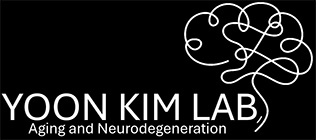RESEARCH
Cell-type-specific fingerprints of Aging in Parkinson’s Disease
Aging is a major risk factor for many neurodegenerative conditions, including Parkinson’s disease (PD). The goal of this study is to identify cell-type-specific fingerprints of the transcriptome and the related epigenome generated during aging and PD pathogenesis. We employ a combined analysis of single-nuclei RNA-seq and ATAC-seq, as well as spatial transcriptomics, on postmortem human brain samples from individuals in young, aged, and PD states. Our recent study, employing this technique, reveals that oligodendrocytes might play a key role in aging and PD pathogenesis. We are now further elucidating various cell-type-specific therapeutic targets.

Transcriptional Mutagenesis from oxidative DNA lesion during Aging and Neurodegenerative Disorders.
The most frequent DNA lesion caused by oxidative stress is 8-oxo-7,8-dihydroguanine (8-oxodG), often associated with neurodegenerative diseases, including Parkinson’s disease (PD), Alzheimer’s disease (AD), and aging processes. In terminally differentiated neurons, 8-oxodG DNA lesions in the transcribed strand of an active gene could be bypassed by RNA polymerase II, generating erroneous proteins through a process called transcriptional mutagenesis (TM). The goal of this study is to profile TM variants of disease-related proteins such as α-synuclein, amyloid β, Tau, and TDP-34, elucidating their contribution to disease pathogenesis. Our recent study demonstrates that α-synuclein TM variants contribute to Lewy body formation and PD pathogenesis.

Microbiome-Gut-Brain Axis in α-synuclein-mediated Parkinson’s Disease Pathogenesis.
Braak’s findings indicate that α-synuclein pathology follows a topographically predictable sequence in Parkinson’s disease (PD): starting in olfactory and enteric neurons during the early stage, it then propagates to the brain stem and eventually reaches the neocortex in the later stages of PD. This observation underscores the gut as the initial region to develop α-synuclein pathology. Mounting evidence supports the ‘gut hypothesis for PD pathogenesis,’ suggesting that disturbances in the intestinal environment such as dysbiosis of gut microbiome trigger α-synuclein aggregation, which then propagates trans-synaptically through the vagus nerve into the brain. Our laboratory is working on establishing novel mouse models of PD and dementia with Lewy body (DLB) that replicate dysbiosis and α-synuclein pathology in the gut, subsequently propagating into the brain. Using these models, we aim to identify the specific cells initiating α-synuclein pathology in the gut lumen and develop effective therapies for PD.

Pum2-mediated translational regulation of α-synuclein mRNA on the outer surface of mitochondria.
α-Synuclein and mitochondrial dysfunction are central components in PD pathogenesis. Mitochondrial dysfunction is a common feature in various PD pathogenic processes, and α-SYN toxicity appears to have a pronounced impact on mitochondria. While the intricate crosstalk between mitochondria and α-SYN is not fully understood, our preliminary studies suggest that the 3’-untranslated region (3’-UTR) of α-SYN mRNA plays a key role in the translational regulation of α-SYN near mitochondria. We observed that α-synuclein mRNA localizes on the outer surface of mitochondria, and Pum2-mediated translational regulation plays a role in modulating mitochondrial function. The study aims to elucidate how the aging process affects this regulation and contributes to PD pathogenesis.

